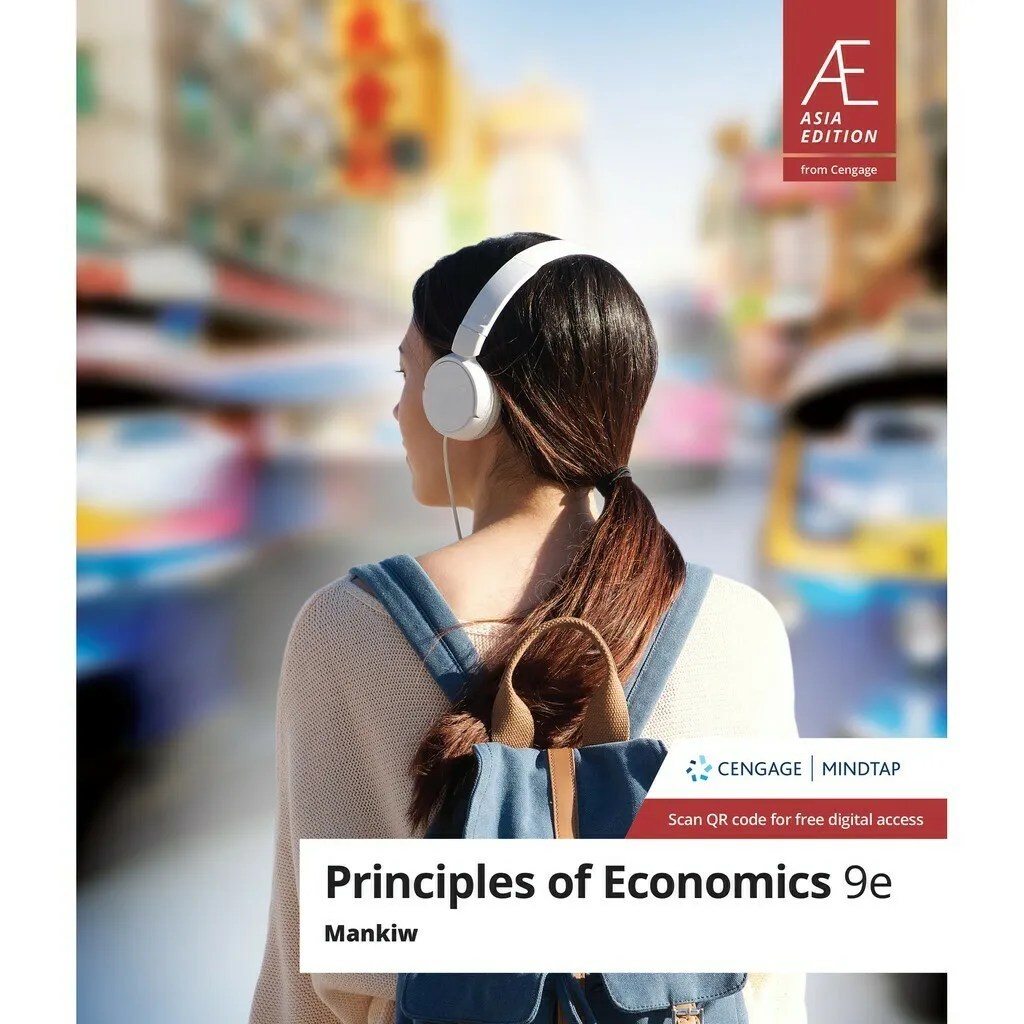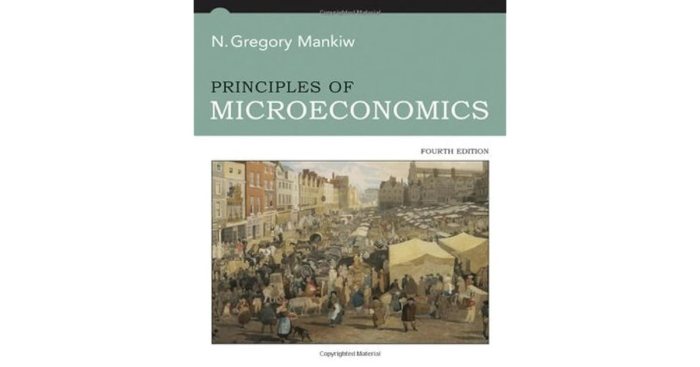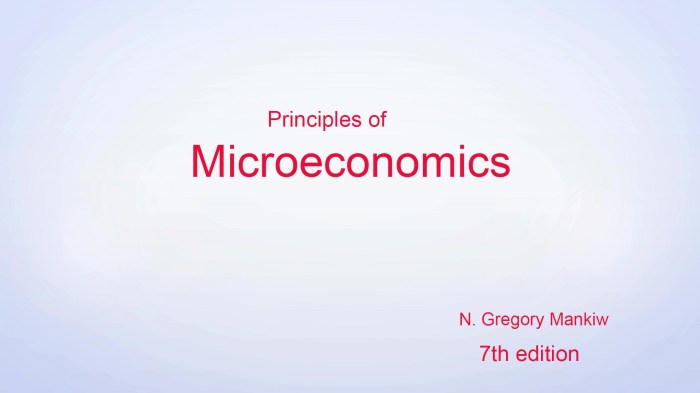Principles of microeconomics 9th edition n. gregory mankiw – Principles of Microeconomics, 9th Edition by N. Gregory Mankiw embarks on a journey into the core concepts of microeconomics, offering a comprehensive exploration of how individuals and firms make decisions in a market economy. With a blend of theoretical rigor and real-world examples, this authoritative text provides a solid foundation for understanding the intricate workings of the economic landscape.
Delving into the principles of demand and supply, elasticity, consumer behavior, and production costs, the book unveils the forces that shape market equilibrium and economic outcomes. It examines the structures of perfect competition, monopoly, oligopoly, and monopolistic competition, highlighting the distinct characteristics and implications of each market type.
Furthermore, the text delves into the strategic interactions of firms through game theory, providing a framework for analyzing economic behavior in a dynamic and interactive environment.
Principles of Microeconomics, 9th Edition by N. Gregory Mankiw: Principles Of Microeconomics 9th Edition N. Gregory Mankiw

The ninth edition of N. Gregory Mankiw’s “Principles of Microeconomics” provides a comprehensive overview of the key concepts and theories of microeconomics. This textbook is widely used in undergraduate economics courses and offers a clear and accessible introduction to the subject.
Demand and Supply, Principles of microeconomics 9th edition n. gregory mankiw
Demand and supply are fundamental concepts in microeconomics. Demand refers to the quantity of a good or service that consumers are willing and able to purchase at a given price. Supply refers to the quantity of a good or service that producers are willing and able to offer for sale at a given price.
| Price | Quantity Demanded | Quantity Supplied |
|---|---|---|
| P1 | Q1 | Q1′ |
| P2 | Q2 | Q2′ |
The relationship between price and quantity demanded/supplied is typically represented graphically using a demand and supply curve. The intersection of the demand and supply curves determines the market equilibrium price and quantity.
Elasticity
Elasticity measures the responsiveness of quantity demanded or supplied to changes in price. Price elasticity of demand measures the percentage change in quantity demanded in response to a 1% change in price. Price elasticity of supply measures the percentage change in quantity supplied in response to a 1% change in price.
Consumer Behavior
Consumer behavior is a central topic in microeconomics. Consumers make decisions about what to buy, how much to buy, and when to buy it based on their preferences and budget constraints. The theory of consumer behavior provides a framework for understanding these decisions.
Production and Costs
Production refers to the process of transforming inputs into outputs. Firms use various production functions to produce goods and services. Production costs include fixed costs, which do not vary with output, and variable costs, which do vary with output.
Perfect Competition
Perfect competition is a market structure in which there are many buyers and sellers, and no single firm has market power. In a perfectly competitive market, firms are price takers and must accept the market price for their products.
Monopoly
A monopoly is a market structure in which there is only one seller of a good or service. Monopolists have market power and can set prices above marginal cost.
Oligopoly
Oligopoly is a market structure in which there are a few large firms that dominate the market. Oligopolists compete with each other, but they also have some degree of market power.
Monopolistic Competition
Monopolistic competition is a market structure in which there are many firms that sell differentiated products. Firms in a monopolistically competitive market have some market power, but they face competition from other firms that offer similar products.
Game Theory
Game theory is a branch of mathematics that studies strategic interactions between rational agents. Game theory can be used to analyze a wide range of economic interactions, including competition, cooperation, and bargaining.
Expert Answers
What are the key concepts of microeconomics?
Microeconomics focuses on the behavior of individual economic agents, such as consumers, firms, and resource owners, and how their interactions determine the allocation of resources and the prices of goods and services.
How does elasticity measure the responsiveness of demand or supply to changes in price?
Elasticity quantifies the percentage change in quantity demanded or supplied relative to a percentage change in price, providing insights into the sensitivity of market participants to price fluctuations.
What is the significance of perfect competition in microeconomic analysis?
Perfect competition represents an idealized market structure where numerous small firms produce identical products, leading to efficient resource allocation and consumer welfare maximization.

